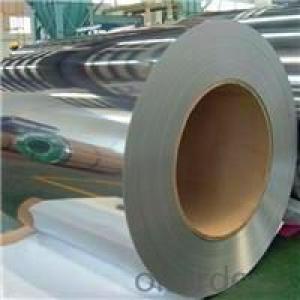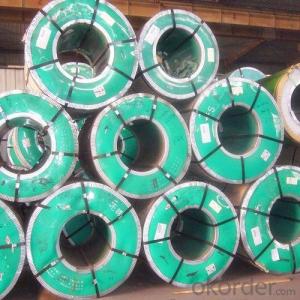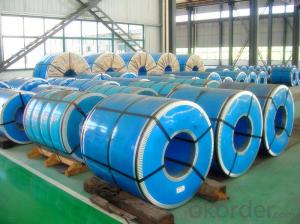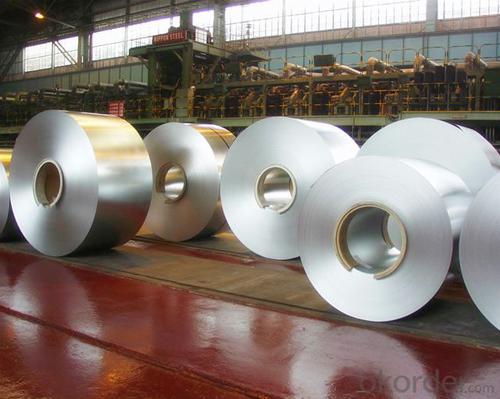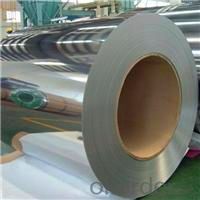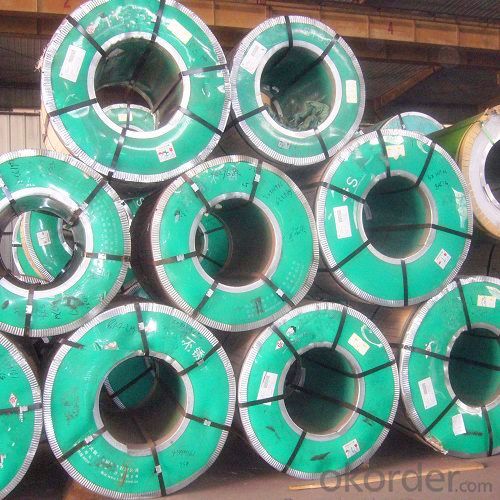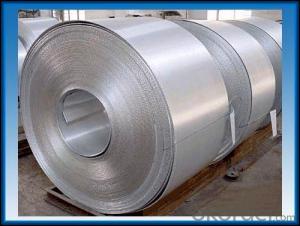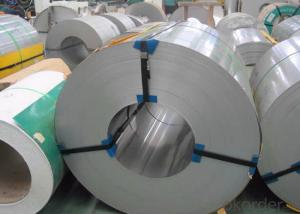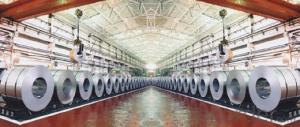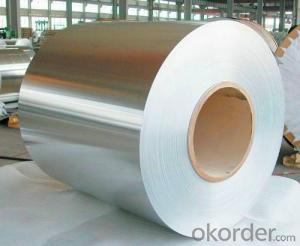Stainless Steel Coil Cold Rolled 304 With Best Quality
- Loading Port:
- China main port
- Payment Terms:
- TT OR LC
- Min Order Qty:
- 100 m.t.
- Supply Capability:
- 5000 m.t./month
OKorder Service Pledge
OKorder Financial Service
You Might Also Like
1.Structure of Stainless Steel Coil Cold Rolled 304 With Good Quality
Cold Rolled stainless steel Coil with good quality is one of the raw material of the cold
rolled stainless steel Coil, which can be used directly in many places. Stainless Steel
(Stainless Steel) is short for acid-proof Stainless Steel, resistant to weak corrosive
medium such as air, steam, water, or with a Stainless Steel grade.
2.Main Features of Prefabricated Steel Structure High Building Project
Weld-ability: The purpose of the different requirement for welding performance are
different.1 Kind of tableware generally do not require the performance of welding, even
including some pot class enterprise. But the vast majority of products all need raw
materials welding performance is good, like the 2 kinds of tableware, thermos flask, steel
pipes, water heaters, water dispensers, etc.
Heat resistant performance Heat resistant performance refers to the high temperature
stainless steel can still maintain its excellent physical and mechanical properties. Carbon:
the influence of carbon in austenitic stainless steel is formed strong and steady. Set the
austenitic austenitic area and expand elements. Carbon formation of austenite is about 30
times that of the nickel, the ability of carbon is a kind of gap elements, through the solid
solution strengthening can significantly increase the strength of the austenitic stainless
steel. Carbon austenitic stainless steel can be improved in high concentration chloride
(e.g., 42% MgCl2 boiling solution) in the performance of the resistance to stress corrosion.
But, in the austenitic stainless steel, carbon is often seen as the harmful elements, this is
mainly due to the corrosion of stainless steel used in some conditions, such as welding or
heating by 450 ~ 850 ℃), carbon steel with chromium in forming high chromium Cr23C6
type carbon compounds which can lead to local chromium depletion, make steel corrosion
resistance especially resistant to intergranular corrosion performance degradation. So.
Since the 60 s of the development of new Cr-Ni austenitic stainless steel is mostly carbon
content less than 0.03% or 0.02% of the ultra-low carbon type.
3. Stainless Steel Coil Cold Rolled 304 With Good Quality Images
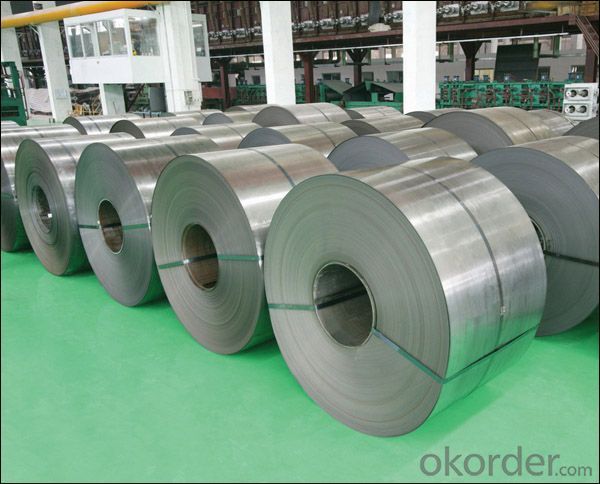
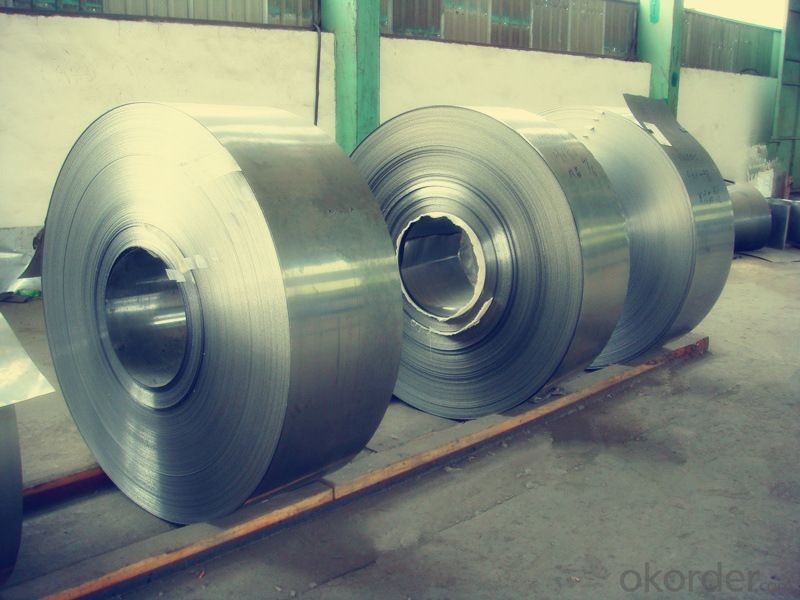
4. Stainless Steel Coil Cold Rolled 304 With Good Quality Specification
Ferritic stainless steel Chromium containing 15% ~ 30%. Its corrosion resistance,
toughness and weldability with chromium content increases with the increase of chloride
stress corrosion resistance is superior to other types of stainless steel, fall into this
category of Crl7, Cr17Mo2Ti, Cr25, Cr25Mo3Ti, Cr28, etc. Ferritic stainless steel because
of the high chromium content, corrosion resistance and oxidation resistance are relatively
good, but the mechanical properties and process performance is poorer, more used to
stress less acid structure and steel used as antioxidant. This kind of steel to withstand
atmosphere, nitric acid and corrosion of the brine solution, and has good high temperature
oxidation resistance, low thermal expansion coefficient, etc, used in nitric acid and food
factory equipment, also can make work under high temperature parts, such as gas turbine
parts, etc.
Austenitic, ferritic duplex stainless steel The advantages of both austenitic and ferritic
stainless steel, and has the superplasticity. Austenite and ferrite The title Each accounts
for about half of the stainless steel. In the case of contain low C, Cr content was 18% ~
18%, Ni content at 3% ~ 3%. Some steel containing Mo, Cu, Si, Nb, Ti, N and other
alloying elements. This kind of steel both austenite and ferrite stainless steel, the
characteristics of compared with ferrite, plasticity and toughness is higher, no room
temperature brittleness, intergranular corrosion resistance and welding performance were
significantly increased, while maintaining a ferritic stainless steel of 475 ℃ brittleness and
high thermal conductivity, has the characteristics of superplasticity. Compared with
austenitic stainless steel, high strength and resistance to intergranular corrosion and
resistance to chloride stress corrosion is improved obviously. Duplex stainless steel has
excellent resistance to pitting corrosion performance, is also a kind of nickel and stainless
steel.
5. Applications of Stainless Steel Coil 304 With Good Quality
1. Kitchenware: tableware, cookware, Stoves…
2. Food packing: storage cans, food containers…
3. Construction: bridge, roofing, wall, decoration, bathroom accessories…
4. Precision instruments: electrical products, aerospace…
5. Others: automotive parts, machine building, chemical processing, farming…
6.FAQ of Stainless Steel Coil 304 With Good Quality
We have organized several common questions for our clients,may help you sincerely:
How to guarantee the quality of the products?
We have established the international advanced quality management system,every link
from raw material to final product we have strict quality test;We resolutely put an end to
unqualified products flowing into the market. At the same time, we willprovide necessary
follow-up service assurance.
How is the packaging and delivery?
Standard export packing (Coil: waterproof paper + protective steel ring; Circle: wooden
box), or as your requirement and the delivery term is based on the project.
- Q: Can stainless steel strips be used in oil and gas industries?
- Yes, stainless steel strips can be used in oil and gas industries. Stainless steel is highly resistant to corrosion, making it an ideal material for various applications in these industries. It is commonly used for constructing pipelines, storage tanks, and other equipment that come into contact with oil and gas. Its durability and ability to withstand high temperatures and pressure make stainless steel strips a reliable choice in these demanding environments.
- Q: Can stainless steel strips be used in chemical storage applications?
- Indeed, chemical storage applications can make use of stainless steel strips. With its exceptional resistance to corrosion and ability to endure exposure to a wide range of chemicals, stainless steel emerges as an outstanding option for secure chemical storage. Moreover, its durability, ease of cleaning, and impressive strength-to-weight ratio render it fitting for storing and transporting chemicals across diverse environments. The non-reactive characteristic of stainless steel guarantees the utmost purity of the stored chemicals, while its capability to withstand high temperatures further solidifies its appropriateness for chemical storage purposes.
- Q: What are the factors affecting the creep resistance of 111 stainless steel strips?
- The factors affecting the creep resistance of 111 stainless steel strips include the alloy composition, grain size, temperature, and applied stress. The presence of elements like chromium, nickel, and molybdenum enhances creep resistance. A fine grain structure enhances resistance, while higher temperatures and applied stresses can reduce the creep resistance of the stainless steel strips.
- Q: Can stainless steel strips be used in the petroleum industry?
- Yes, stainless steel strips can be used in the petroleum industry. Stainless steel is resistant to corrosion and can withstand high temperatures, making it suitable for various applications in the petroleum industry such as pipelines, storage tanks, and equipment used for refining and processing crude oil and natural gas.
- Q: Are stainless steel strips resistant to oxidation?
- Yes, stainless steel strips are resistant to oxidation due to the presence of chromium in their composition, which forms a protective layer on the surface, preventing oxidation and corrosion.
- Q: Can stainless steel strips be machined?
- Yes, stainless steel strips can be machined.
- Q: Can stainless steel strips be used in medical equipment?
- Indeed, medical equipment can utilize stainless steel strips. In the medical field, stainless steel is frequently employed due to its exceptional resistance to corrosion, formidable strength, and enduring nature. This material exhibits remarkable resilience against rust and endures rigorous sterilization procedures, rendering it a fitting substance for medical devices and equipment. Stainless steel strips can find application in a multitude of areas, including surgical instruments, implants, catheters, orthopedic devices, and diagnostic equipment. Furthermore, the sleek surface of stainless steel facilitates effortless cleaning and maintenance, guaranteeing the utmost level of hygiene within medical environments.
- Q: Can stainless steel strips be used in the automotive manufacturing industry?
- Yes, stainless steel strips can be used in the automotive manufacturing industry. They are commonly used for various applications such as trim, exhaust systems, brackets, and reinforcements due to their corrosion resistance, durability, and high strength-to-weight ratio.
- Q: Is the stainless steel condiment bottle good for rotating or for all holes?
- According to some characteristic elements of main chemical components in steel or steel in the classification, divided into chromium stainless steel, chromium nickel stainless steel, nickel chromium molybdenum stainless steel and low carbon steel, stainless steel, stainless steel and high molybdenum high purity; according to the characteristics and application of classification of steel, stainless steel, divided into nitric acid resistant stainless steel, high resistance to sulfuric acid pitting resistance to stress corrosion of stainless steel, stainless steel, stainless steel and other steel; according to the classification features, divided into low temperature stainless steel, non-magnetic stainless steel, stainless steel, stainless steel, free cutting superplasticity. At present, the commonly used classification methods are classified according to the characteristics of the steel structure, the chemical composition of steel and the combination of the two
- Q: What is the difference between stainless steel strips and stainless steel sheets?
- Stainless steel strips and sheets find extensive use across a variety of industries and applications, yet they vary in dimensions and functionality. Stainless steel strips encompass slender, elongated flat sections of stainless steel, usually measuring between 0.02 inches and 0.125 inches in thickness. They prove valuable in scenarios requiring meticulous measurements, such as automotive components, electrical connectors, and medical instruments. The strips' narrow width allows for greater flexibility in shaping and bending, rendering them suitable for intricate designs and constrained spaces. Conversely, stainless steel sheets consist of larger, flatter sections of stainless steel, available in diverse thicknesses ranging from 0.015 inches to 0.1875 inches or even thicker. These sheets commonly serve purposes demanding expansive surface areas, such as countertops, backsplashes, wall cladding, and roofing. By providing robust and durable surfaces, stainless steel sheets prove ideal for heavy-duty applications wherein structural integrity holds utmost importance. Another distinction between stainless steel strips and sheets lies in their availability and pricing. Stainless steel strips typically come in coils, enabling continuous production and minimizing waste. Consequently, this renders them more cost-effective when compared to stainless steel sheets, which often necessitate custom cutting, potentially leading to increased material expenses. To summarize, although both stainless steel strips and sheets originate from the same top-notch material, their dimensions and functions greatly vary. Stainless steel strips, with their narrow and thin composition, excel in precise applications, while stainless steel sheets, being wider and thicker, prove optimal for larger surface areas and structural purposes.
Send your message to us
Stainless Steel Coil Cold Rolled 304 With Best Quality
- Loading Port:
- China main port
- Payment Terms:
- TT OR LC
- Min Order Qty:
- 100 m.t.
- Supply Capability:
- 5000 m.t./month
OKorder Service Pledge
OKorder Financial Service
Similar products
Hot products
Hot Searches
Related keywords

